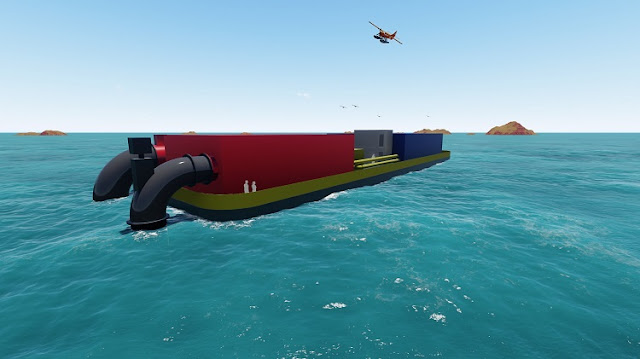Introduction
The ocean cover around 70% of the earth's surface. There are different forms of ocean energy available like waves, tides and the thermal gradient available in the ocean. In the OTEC process, the ocean thermal energy is created by solar energy, when the ocean water absorbs the solar radiation that creates the temperature difference between the surface water and the bottom water of the ocean. That temperature gradient is used for the electric power generation.
The Ocean Thermal Energy Conversion (OTEC) is a renewable energy technology that converts solar radiation into electrical energy. In equatorial areas of earth, the ocean's surface water temperature, and the deep cold water temperature differ by about 20°C. The efficiency of the OTEC will be higher if the temperature difference is bigger. Let us see how the OTEC plant generates electricity in this article.
Main Components of OTEC System
- Seawater pumps
- Coldwater conduit
- Platform
- Evaporator
- Condenser
- Turbine
- Generator
- Station keeping/ mooring
- Data acquisition and control systems
Types of an OTEC system
- Closed or Anderson cycle OTEC system
- Open or Claude cycle OTEC system
- The hybrid cycle OTEC system
Closed or Anderson cycle OTEC system
- In the closed cycle, a working fluid (refrigerant) which has a low boiling point such as ammonia is evaporated by using warm surface seawater. Then it will be passed into the turbine to convert the thermal energy into mechanical energy.
- Once the energy conversion is done, the vapor coming out from the turbine will be cooled and condensed in a condenser by using the cold water pumped from the ocean depths. So, the ammonia is converted to the liquid state and this liquid is recirculated in a closed-loop system to vaporize and drive the turbine.
- This kind of plant is compact and consumes less cost compared to the open-cycle OTEC plant.
The important requirements for the working fluid are,
- It should have a low boiling point (Boiling point of ammonia is -33°C).
- Great heat transfer characteristics.
- Low volume of the fluid per kW of power produced.
- Environment acceptability.
- Reasonable cost.
Open or Claude cycle OTEC system
- In open-cycle, Only the seawater is used to generate heat energy without any kind of intermediate fluid like in closed cycle.
- The warm water from the top surface will be evaporated to get the low-pressure steam using a flash evaporator which is maintained at the partial vacuum. So, the water can evaporate at the lower temperature when the pressure is lower than the atmospheric pressure.
- The lower pressure steam obtained from the flash evaporator will be expanded in a turbine to convert the thermal energy into mechanical energy.
- Then the steam from the turbine is passed into a condenser which converts the steam into water form by using the cold water drawn from the depths of the ocean.
- So, this open-cycle process is used to run the surface seawater through the vacuum and the steam generated is used to run a turbine.
Hybrid Cycle OTEC System
- The hybrid cycle combines the features of both open-cycle and closed-cycle OTEC.
- The main focus to create a hybrid cycle plant is to combine the best features and avoid the worst features of the open and closed cycle OTEC system.
- The warm water enters into a vacuum chamber and is flash evaporated, similar to the open-cycle OTEC system.
- Then the steam vaporizes the ammonia which is the working fluid of a closed cycle on the other side of an ammonia vaporizer.
- The vaporized fluid drives the turbine to produce electrical energy.
- The fluid from the turbine leaves to the condenser and it is pumped to the evaporator to repeat the cycle.
Advantages of OTEC:
- Uses renewable natural resource.
- Reduce the dependency on fossil fuel.
- Zero carbon emission.
- Produces electricity as well as freshwater.
Disadvantages of OTEC:
- OTEC plant has very low efficiency in converting the ocean thermal energy.
- The electricity production is costlier compared to conventional processes.
- The initial cost of setting up an OTEC plant is costlier and maintenance also costlier.




Comments
Post a Comment